
XIV. The Bohuslav Fuchs Prize - Jury Reactions
for the winter semester 2017/2018
How would you evaluate the individual pages of the projects from analyses through urbanism concepts, feasibility, etc...
Ing. arch. MArch. Janica Šipulová: We tried to focus on the creative process, the way of thinking, creating analyses and their evaluations, understanding the problem beyond the immediate area... The biggest mistake is empty analyses that do not lead to any conclusions and are not connected with the concepts. In our short time to understand and evaluate the projects, we could not delve too deeply, but we made an effort. Therefore, the way of clear and comprehensible presentation is important for individual topics. Feasibility was discussed for some projects, while for others we understood the projects in a more conceptual way. Generally, it can be said that the best projects receive an A grade from your supervisors. We evaluated your work in the given time, as we found it, without knowing how each student worked and how their project developed over time. Sometimes the mistake was that the process of your work was not presented sufficiently or at all. I believe that the work process is very important and sometimes even more crucial than the final result of the student project.
Ing. arch. Andrej Olah: I was particularly interested in the diversity of the projects. From assignments that were very realistic, such as an apartment building in Vienna, which had a specific regulation defined for a particular parcel, and the projects were developed to the extent that they could be realized, to purely conceptual assignments where the concept, finding answers to the posed questions, and formulating one's own opinion were more important than the feasibility of the work.
Did you miss any topic that someone should address? Or something you would have listed as a studio?
Ing. arch. Andrej Olah: A topic that has long interested me is public space in the city; it could also be termed the space between buildings... It would fall into the category of urbanism, architecture, or perhaps something in between. This type of public space is very fundamental and often overlooked. Either objects are designed, or urbanism is designed at a large scale, but it does not reach human scale. I think it's important to think about what attracts people to the city, what creates the city, urban interior, and how all of this relates to the ground floor.
How do you rate the overall level of the exhibited works?
Ing. arch. MArch. Janica Šipulová: I believe that thanks to the diversity and certain freedom in the themes provided, as well as the way individual students approached their work, the level is very high. Previously, there were many similar themes and projects hanging in the corridors, similarly presented. Today, I must say, and I do not know if it is like this every year, that the diversity is really broad. The school should open these imagined scissors as much as possible, also in terms of presentation style and, of course, the focus of the studios. We find here various presentation techniques, different topics, and ways of thinking. This freedom can be crucial for the future direction of the school, and it pleased me a lot.
Ing. arch. Gabriel Kurtis: I agree with Janica, I really like that the process how students arrive at their results is visible. However, I see significant room for improvement in the presentation of the projects. The vast majority of projects do not have their presentation pushed to the level that it captures a neutral observer. After all, an architect offers their work and must know how to present it. We greatly appreciated studios where students collectively addressed one topic and then also presented it uniformly.
Ing. arch. MArch. Janica Šipulová: We consider collaboration to be fundamental.
Do you perceive differences in the level of individual studios?
Ing. arch. Gabriel Kurtis: We perceive differences in the level of studios, which is why we unanimously decided in the jury to award three best studios. The evaluation was not only about the result of the work, but also the way the teachers work with the students.
Ing. arch. MArch. Janica Šipulová: I also wanted to mention that initially we chose seven studios and from them we only selected the three best because we wanted to be narrowly focused. Sometimes we acknowledged some project from studios that we also considered to be significant. So this is our key to evaluation. I would recommend everyone to take the presentation of studios seriously. We rated all those who approached it as a collective presentation of the studio positively. Among the studios with great presentations was also Jan Mléčka's studio presenting "Les" and Palaščák – Nový studio presenting Kraví Hora. On the other hand, some studios we could hardly find and for some it was a pity that the excellently chosen topic did not have a collaboratively refined presentation.
Ing. arch. Andrej Olah: Vertically organized studios work excellently because people help each other, it’s absolutely fantastic. I also perceive that there is a difference in the inspiring nature of the assignments. The weaker studios have assignments that are too straightforward or repetitive. It doesn't present a challenge then. Conversely, in the better ones, the educator does not just sit there but actively engages with the students and dedicates extra time to them. I do not believe that they manage it during regular consultation hours. It is essential to foster team spirit and engage people. In some places, it was really noticeable that the students enjoyed it; we entered the studio, and a completely different atmosphere was felt there. Then there were others where projects were literally hidden among projects from previous years, as if they were exhibited just out of obligation. In the teamwork projects, it was clear that it was more of a presentation, an exhibition, like "Les" or projects in the Kristek - Sedlák studio, where the amount of work that the students did was visible, and at the same time it was fun.
In what areas do students have weaknesses and where do they excel?
Ing. arch. Andrej Olah: Visual or graphic presentation, as well as the explanation of the concept, essentially the narrative. But also analyses; many times it was seen that they were processed just based on the materials, e.g., shaded communications, without real field experience. And likewise, working with the context, the environment into which architecture is set.
Ing. arch. MArch. Janica Šipulová: I believe that students forget that it is not clear to outsiders what they are addressing and where they are doing it. It would be better if they did not forget this because we really sometimes had to search and decipher. Sometimes there were weaknesses precisely in the emptiness of the analyses. On the other hand, I must say that these two aspects were sometimes extremely strong.
Ing. arch. Gabriel Kurtis: In the evaluated studios, it is evident that where collaboration works, students achieve greater diversity, quality, results, and presentation.
Ing. arch. MArch. Janica Šipulová: Collaboration is truly very important and fundamental. Students should learn about it in school.
Ing. arch. Andrej Olah: It is also the case in practice that often collaboration is key because rarely does one architect design an entire building. It is usually a collaboration with professionals and with other architects; the teams are large, and the school should prepare students for the fact that it is not just about ego, but about communication and collaboration.
Ing. arch. MArch. Janica Šipulová: In summary, I think that collaboration within the studio is crucial on several levels. Collaboration during the project, mutual learning, but also how the studio is subsequently exhibited. Some exhibition activity and presentation of collective work. On the other hand, freedom in the way of presentation is also important, as some works are good for panels, some are good when they have great models, some when they have A3 portfolios, and sometimes in a different format. The fact that we saw various ways of presentation is amazing, and we were thrilled by it. Some really put in a lot of effort, and if the whole studio does it together, it is a beautiful sight.
How would you evaluate the level of the faculty as such?
Ing. arch. MArch. Janica Šipulová: Keep going, be as open as possible, and allow for freedom, searching, collaboration. Let the works and ways of thinking diversify more...
What would you recommend to students?
Ing. arch. MArch. Janica Šipulová: Go abroad and alternate bachelor's and master's studies at different schools, collaborate.
Ing. arch. Andrej Olah: They need to want it themselves, to be thirsty for architecture. You can't just get on the lift and let yourself be taken up; you have to climb that hill yourself and possibly get lost three times along the way.
Ing. arch. Gabriel Kurtis: They should not wait to be taught; they should learn for themselves. They should be curious, creative, and, above all, collaborate. They have a unique opportunity to utilize the school as a creative hub.
Ing. arch. MArch. Janica Šipulová: View the school merely as a platform that is only there for students to build upon. The school is just some sort of grid, and students must fill it in. They must work to fill it with work, collaboration, and continuously search, question, search, and question again in a cyclical manner. They must learn to think primarily. They will learn the craft very quickly if they know how to think. They should try as many different projects, teachers, and find their direction and what they enjoy.
Ing. arch. Andrej Olah:
It is important not only to look at beautiful pictures but to experience architecture personally, walk through architecture, get to know buildings, and also the theory. Learn to understand a person and their needs. Do not just conduct an analysis for the sake of analysis but understand and discover what is problematic about a particular place or conversely, what its strengths are in situ.
What influence does the internet have on creation? Does it become some sort of template for design?
Ing. arch. MArch. Janica Šipulová: I don't mind the internet, but it needs to be used wisely. I believe it is an integral part of education today, but it is important to think critically, have some model, and be able to use it for one's specific intention. At the same time, it should not be overdone. Because we saw some projects that had full portfolios of references, which is not acceptable.
Ing. arch. Andrej Olah: It's necessary to be inspired, but not to copy.
What should a graduate in architecture be able to do?
Ing. arch. MArch. Janica Šipulová: Think, work, collaborate, question...
Ing. arch. Gabriel Kurtis: Everything and also humility.
Ing. arch. Andrej Olah: To think logically, that’s all.
Would you exhibit some work in your gallery?
Ing. arch. Gabriel Kurtis: Yes, I think there have been several, for example: Palaščák – Nový studio had an excellent presentation in the Mini gallery, also the work of Barbora Ponešová and Honza Foretník's studio, Kristek - Sedlák studio, and also Mr. Christian Ambose's studio.
Should practice be part of the education?
Ing. arch. Gabriel Kurtis: A mandatory foreign internship should be part of the education.
What do you think is the best path for a foreign architect?
Ing. arch. MArch. Janica Šipulová: The best path for a student's professional career is their thesis. It is the first project they will be presenting. The thesis is an independent work, and the topic should be well chosen. It should signify that this is what I enjoy and I went very deep into this topic. The architect may not subsequently engage with the given topic, but it is the last student project that closes and opens a new phase. This should be utilized.
Ing. arch. MArch. Janica Šipulová: We tried to focus on the creative process, the way of thinking, creating analyses and their evaluations, understanding the problem beyond the immediate area... The biggest mistake is empty analyses that do not lead to any conclusions and are not connected with the concepts. In our short time to understand and evaluate the projects, we could not delve too deeply, but we made an effort. Therefore, the way of clear and comprehensible presentation is important for individual topics. Feasibility was discussed for some projects, while for others we understood the projects in a more conceptual way. Generally, it can be said that the best projects receive an A grade from your supervisors. We evaluated your work in the given time, as we found it, without knowing how each student worked and how their project developed over time. Sometimes the mistake was that the process of your work was not presented sufficiently or at all. I believe that the work process is very important and sometimes even more crucial than the final result of the student project.
Ing. arch. Andrej Olah: I was particularly interested in the diversity of the projects. From assignments that were very realistic, such as an apartment building in Vienna, which had a specific regulation defined for a particular parcel, and the projects were developed to the extent that they could be realized, to purely conceptual assignments where the concept, finding answers to the posed questions, and formulating one's own opinion were more important than the feasibility of the work.
Did you miss any topic that someone should address? Or something you would have listed as a studio?
Ing. arch. Andrej Olah: A topic that has long interested me is public space in the city; it could also be termed the space between buildings... It would fall into the category of urbanism, architecture, or perhaps something in between. This type of public space is very fundamental and often overlooked. Either objects are designed, or urbanism is designed at a large scale, but it does not reach human scale. I think it's important to think about what attracts people to the city, what creates the city, urban interior, and how all of this relates to the ground floor.
How do you rate the overall level of the exhibited works?
Ing. arch. MArch. Janica Šipulová: I believe that thanks to the diversity and certain freedom in the themes provided, as well as the way individual students approached their work, the level is very high. Previously, there were many similar themes and projects hanging in the corridors, similarly presented. Today, I must say, and I do not know if it is like this every year, that the diversity is really broad. The school should open these imagined scissors as much as possible, also in terms of presentation style and, of course, the focus of the studios. We find here various presentation techniques, different topics, and ways of thinking. This freedom can be crucial for the future direction of the school, and it pleased me a lot.
Ing. arch. Gabriel Kurtis: I agree with Janica, I really like that the process how students arrive at their results is visible. However, I see significant room for improvement in the presentation of the projects. The vast majority of projects do not have their presentation pushed to the level that it captures a neutral observer. After all, an architect offers their work and must know how to present it. We greatly appreciated studios where students collectively addressed one topic and then also presented it uniformly.
Ing. arch. MArch. Janica Šipulová: We consider collaboration to be fundamental.
Do you perceive differences in the level of individual studios?
Ing. arch. Gabriel Kurtis: We perceive differences in the level of studios, which is why we unanimously decided in the jury to award three best studios. The evaluation was not only about the result of the work, but also the way the teachers work with the students.
Ing. arch. MArch. Janica Šipulová: I also wanted to mention that initially we chose seven studios and from them we only selected the three best because we wanted to be narrowly focused. Sometimes we acknowledged some project from studios that we also considered to be significant. So this is our key to evaluation. I would recommend everyone to take the presentation of studios seriously. We rated all those who approached it as a collective presentation of the studio positively. Among the studios with great presentations was also Jan Mléčka's studio presenting "Les" and Palaščák – Nový studio presenting Kraví Hora. On the other hand, some studios we could hardly find and for some it was a pity that the excellently chosen topic did not have a collaboratively refined presentation.
Ing. arch. Andrej Olah: Vertically organized studios work excellently because people help each other, it’s absolutely fantastic. I also perceive that there is a difference in the inspiring nature of the assignments. The weaker studios have assignments that are too straightforward or repetitive. It doesn't present a challenge then. Conversely, in the better ones, the educator does not just sit there but actively engages with the students and dedicates extra time to them. I do not believe that they manage it during regular consultation hours. It is essential to foster team spirit and engage people. In some places, it was really noticeable that the students enjoyed it; we entered the studio, and a completely different atmosphere was felt there. Then there were others where projects were literally hidden among projects from previous years, as if they were exhibited just out of obligation. In the teamwork projects, it was clear that it was more of a presentation, an exhibition, like "Les" or projects in the Kristek - Sedlák studio, where the amount of work that the students did was visible, and at the same time it was fun.
In what areas do students have weaknesses and where do they excel?
Ing. arch. Andrej Olah: Visual or graphic presentation, as well as the explanation of the concept, essentially the narrative. But also analyses; many times it was seen that they were processed just based on the materials, e.g., shaded communications, without real field experience. And likewise, working with the context, the environment into which architecture is set.
Ing. arch. MArch. Janica Šipulová: I believe that students forget that it is not clear to outsiders what they are addressing and where they are doing it. It would be better if they did not forget this because we really sometimes had to search and decipher. Sometimes there were weaknesses precisely in the emptiness of the analyses. On the other hand, I must say that these two aspects were sometimes extremely strong.
Ing. arch. Gabriel Kurtis: In the evaluated studios, it is evident that where collaboration works, students achieve greater diversity, quality, results, and presentation.
Ing. arch. MArch. Janica Šipulová: Collaboration is truly very important and fundamental. Students should learn about it in school.
Ing. arch. Andrej Olah: It is also the case in practice that often collaboration is key because rarely does one architect design an entire building. It is usually a collaboration with professionals and with other architects; the teams are large, and the school should prepare students for the fact that it is not just about ego, but about communication and collaboration.
Ing. arch. MArch. Janica Šipulová: In summary, I think that collaboration within the studio is crucial on several levels. Collaboration during the project, mutual learning, but also how the studio is subsequently exhibited. Some exhibition activity and presentation of collective work. On the other hand, freedom in the way of presentation is also important, as some works are good for panels, some are good when they have great models, some when they have A3 portfolios, and sometimes in a different format. The fact that we saw various ways of presentation is amazing, and we were thrilled by it. Some really put in a lot of effort, and if the whole studio does it together, it is a beautiful sight.
How would you evaluate the level of the faculty as such?
Ing. arch. MArch. Janica Šipulová: Keep going, be as open as possible, and allow for freedom, searching, collaboration. Let the works and ways of thinking diversify more...
What would you recommend to students?
Ing. arch. MArch. Janica Šipulová: Go abroad and alternate bachelor's and master's studies at different schools, collaborate.
Ing. arch. Andrej Olah: They need to want it themselves, to be thirsty for architecture. You can't just get on the lift and let yourself be taken up; you have to climb that hill yourself and possibly get lost three times along the way.
Ing. arch. Gabriel Kurtis: They should not wait to be taught; they should learn for themselves. They should be curious, creative, and, above all, collaborate. They have a unique opportunity to utilize the school as a creative hub.
Ing. arch. MArch. Janica Šipulová: View the school merely as a platform that is only there for students to build upon. The school is just some sort of grid, and students must fill it in. They must work to fill it with work, collaboration, and continuously search, question, search, and question again in a cyclical manner. They must learn to think primarily. They will learn the craft very quickly if they know how to think. They should try as many different projects, teachers, and find their direction and what they enjoy.
Ing. arch. Andrej Olah:
It is important not only to look at beautiful pictures but to experience architecture personally, walk through architecture, get to know buildings, and also the theory. Learn to understand a person and their needs. Do not just conduct an analysis for the sake of analysis but understand and discover what is problematic about a particular place or conversely, what its strengths are in situ.
What influence does the internet have on creation? Does it become some sort of template for design?
Ing. arch. MArch. Janica Šipulová: I don't mind the internet, but it needs to be used wisely. I believe it is an integral part of education today, but it is important to think critically, have some model, and be able to use it for one's specific intention. At the same time, it should not be overdone. Because we saw some projects that had full portfolios of references, which is not acceptable.
Ing. arch. Andrej Olah: It's necessary to be inspired, but not to copy.
What should a graduate in architecture be able to do?
Ing. arch. MArch. Janica Šipulová: Think, work, collaborate, question...
Ing. arch. Gabriel Kurtis: Everything and also humility.
Ing. arch. Andrej Olah: To think logically, that’s all.
Would you exhibit some work in your gallery?
Ing. arch. Gabriel Kurtis: Yes, I think there have been several, for example: Palaščák – Nový studio had an excellent presentation in the Mini gallery, also the work of Barbora Ponešová and Honza Foretník's studio, Kristek - Sedlák studio, and also Mr. Christian Ambose's studio.
Should practice be part of the education?
Ing. arch. Gabriel Kurtis: A mandatory foreign internship should be part of the education.
What do you think is the best path for a foreign architect?
Ing. arch. MArch. Janica Šipulová: The best path for a student's professional career is their thesis. It is the first project they will be presenting. The thesis is an independent work, and the topic should be well chosen. It should signify that this is what I enjoy and I went very deep into this topic. The architect may not subsequently engage with the given topic, but it is the last student project that closes and opens a new phase. This should be utilized.
The English translation is powered by AI tool. Switch to Czech to view the original text source.

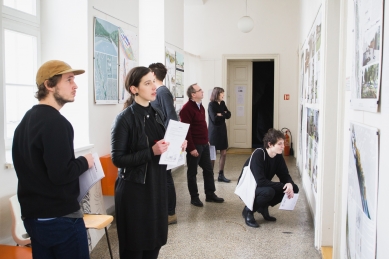
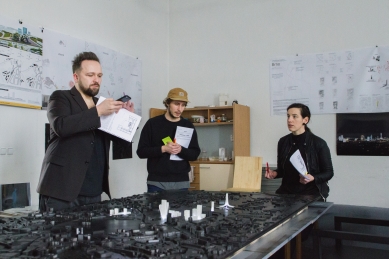
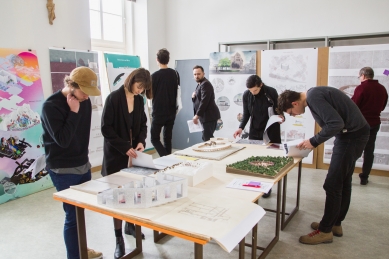
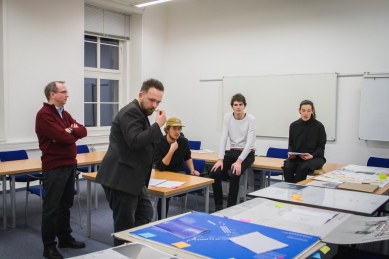
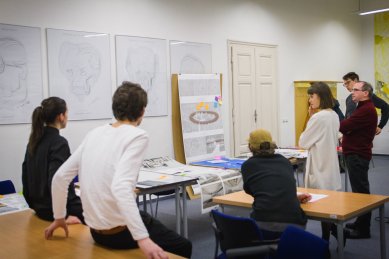
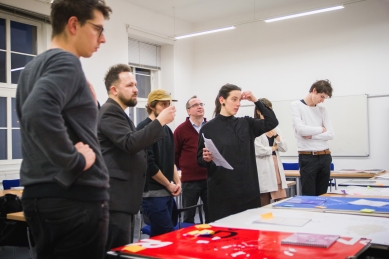
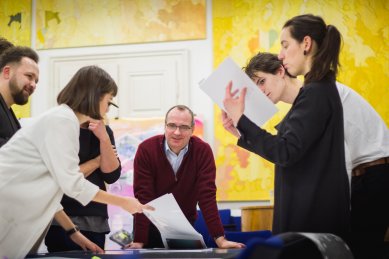
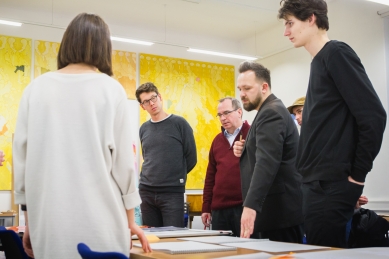
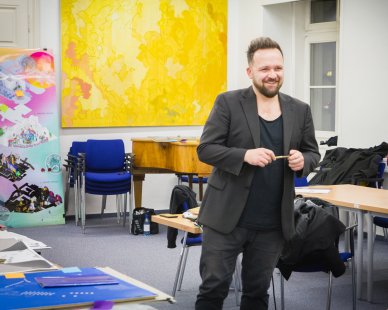
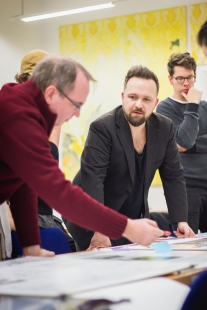
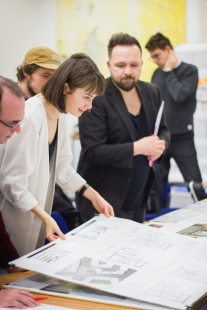
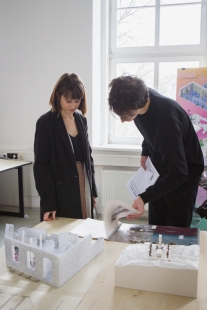
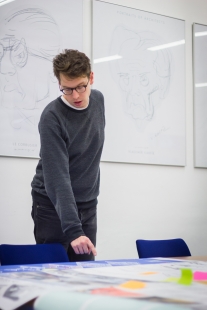
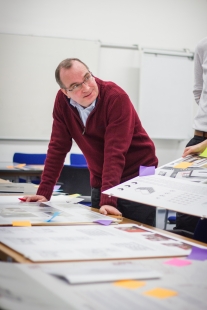
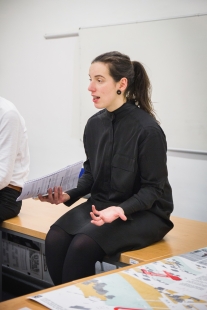
0 comments
add comment










